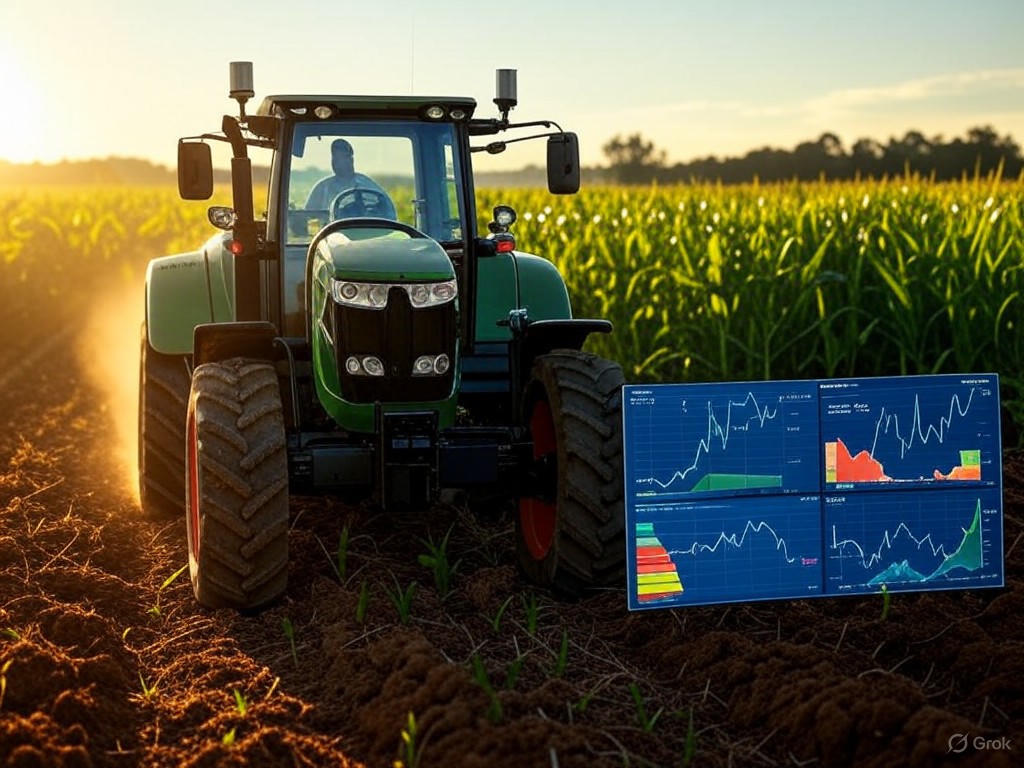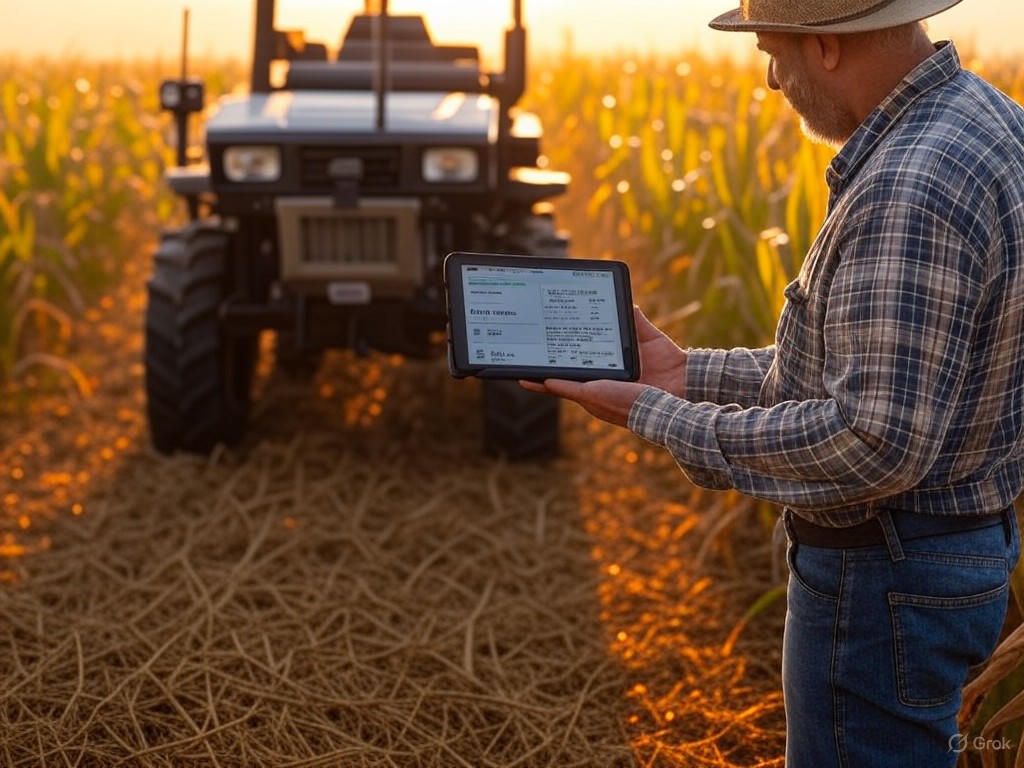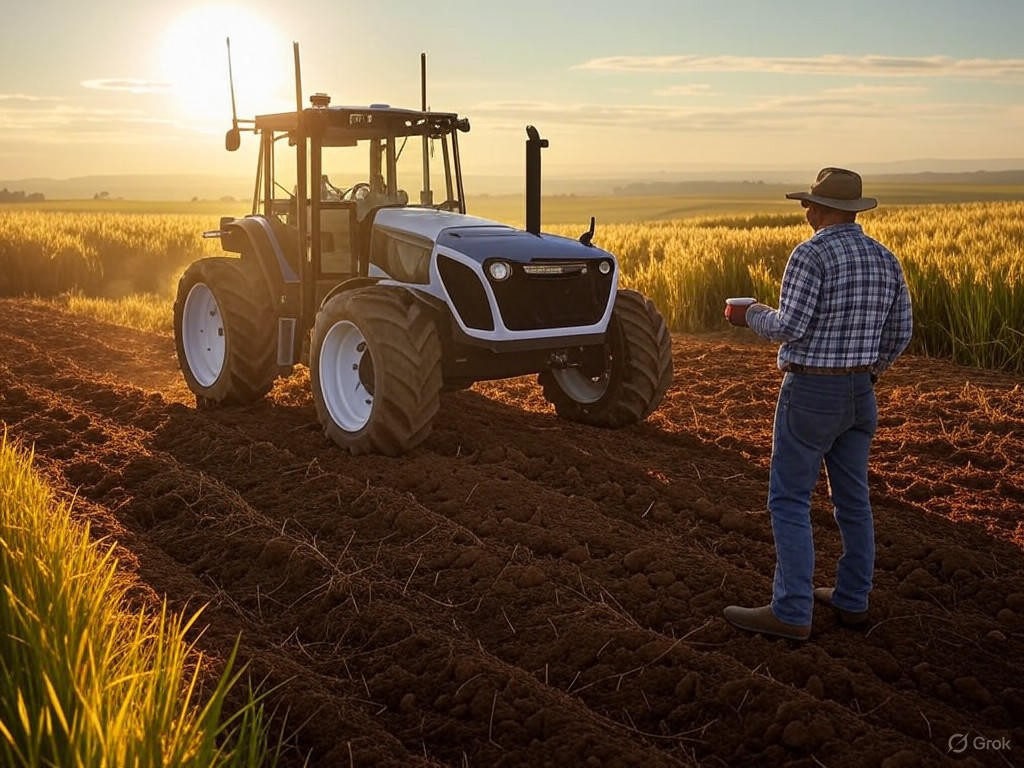Autonomous Tractors: Farming’s Future
In the vast, sun-baked fields of the American heartland, where generations of farmers have tilled the soil with sweat and ingenuity, a new player is emerging on the horizon. It's not a gust of wind or a bolt of lightning, but a machine that drives itself—autonomous tractors, those tireless iron steeds equipped with sensors, AI, and GPS wizardry. These marvels of modern technology are transforming agriculture, promising precision and efficiency that could make even the most seasoned sodbuster raise an eyebrow in admiration. Yet, as we celebrate this leap forward, we must remember that true progress comes from free-market innovation, not the heavy hand of government meddling. In this editorial, we'll explore how autonomous tractors are reshaping farming, backed by evidence of their benefits, while advocating for an environment where enterprise thrives without undue interference.
The Dawn of a New Era in Farming
Picture this: A farmer in Iowa, coffee in hand, watches as his tractor glides across the field at dawn, planting seeds with pinpoint accuracy, adjusting for soil variations without a single human error. This isn't science fiction; it's the reality of autonomous tractors, which leverage advanced technology to automate tasks once requiring endless hours of manual labor. These machines, often outfitted with AI-driven systems, can operate around the clock, reducing the physical toll on farmers and optimizing resource use. According to a report from IEEE Spectrum, autonomous technology in agriculture is projected to grow exponentially, with adoption rates soaring as costs decline—thanks to competitive market forces rather than subsidies or mandates.
The appeal lies in their precision. Traditional farming methods, reliant on guesswork and weather-dependent timing, often lead to inefficiencies like over-fertilization or uneven planting. Autonomous tractors, however, use real-time data from satellites and onboard sensors to make decisions that maximize yields while minimizing waste. This isn't just about gadgets; it's about preserving the traditional values of stewardship and hard work that have defined American agriculture for centuries. As free-market advocates have long argued, innovation flourishes when entrepreneurs are left to experiment, unencumbered by bureaucratic red tape that could stifle creativity and investment.
To illustrate, consider  "An autonomous tractor methodically harvesting golden wheat fields at first light, symbolizing the seamless blend of technology and timeless farming traditions."
"An autonomous tractor methodically harvesting golden wheat fields at first light, symbolizing the seamless blend of technology and timeless farming traditions."
Analyzing the Efficiency Gains
At the core of this transformation is the marriage of technology and agriculture, where autonomous tractors deliver efficiency that borders on the poetic. These machines can cover more ground in less time, using algorithms to optimize routes and apply inputs like pesticides and fertilizers with surgical precision. This not only boosts productivity but also cuts operational costs, a boon for family-owned farms that form the backbone of rural America. A study by the Wall Street Journal highlights how early adopters have seen fuel consumption drop by up to 20% and labor costs plummet, allowing farmers to reinvest profits into their operations rather than relying on government aid.
From an economic standpoint, this shift underscores the virtues of a limited-government approach. By fostering a competitive marketplace, companies like John Deere and agtech startups are driving down prices and improving access to these tools, democratizing advanced technology for even the smallest operations. Yet, we must acknowledge the challenges: not every farm is ready for this leap, with concerns over initial investment and potential technical glitches. Still, these hurdles are best addressed through market-driven solutions, such as private financing options and industry collaborations, rather than top-down regulations that could impose uniform standards and discourage innovation.
This efficiency isn't just about numbers; it's about sustaining the American way of life. Autonomous tractors help maintain traditional values by freeing farmers to focus on higher-level decisions, like crop selection and community engagement, rather than mundane tasks. As AgWeb notes, the technology enhances sustainability by reducing chemical overuse, aligning with conservative principles of responsible resource management without the overreach of environmental mandates.
Evidence from the Fields: Data and Real-World Impact
The evidence for autonomous tractors' impact is as solid as the ground they till. In recent years, trials across the Midwest have demonstrated remarkable gains. For instance, a project in Kansas showed that autonomous systems increased crop yields by 15% through precise seeding and irrigation, according to data compiled by Farm Journal. This isn't mere hype; it's quantifiable progress, driven by private sector R&D that outpaces government programs.
Economically, the ripple effects are profound. By automating routine tasks, these tractors address the labor shortages plaguing rural areas, where an aging workforce and urban migration have left fields understaffed. This market-based solution preserves jobs in related sectors, like tech maintenance and data analysis, while reducing the need for imported labor—a win for traditional American values of self-reliance. Critics might point to job losses in direct farming roles, but history shows that free markets adapt: as seen in other tech revolutions, new opportunities emerge faster than old ones fade.
Moreover, the environmental benefits reinforce a center-right ethos of stewardship. Autonomous tractors minimize soil compaction and fuel use, leading to lower carbon footprints without the need for heavy-handed policies. A comprehensive analysis from IEEE Xplore on precision agriculture reveals that these machines can reduce herbicide application by 10-20%, promoting efficient land use that aligns with conservative ideals of conserving natural resources for future generations.
Visualize the data in action with  "A detailed graph illustrating how autonomous tractors optimize planting patterns, showcasing yield improvements and resource savings in modern agriculture."
"A detailed graph illustrating how autonomous tractors optimize planting patterns, showcasing yield improvements and resource savings in modern agriculture."
Looking to the Future: A Call for Market-Driven Progress
As we stand on the brink of this agricultural renaissance, it's clear that autonomous tractors represent more than just machinery—they embody the spirit of American innovation. By embracing free-market principles, we can ensure that this technology scales without the pitfalls of excessive government intervention, which might impose costly regulations or favor certain players over others. Instead, let competition reign, allowing farmers to choose tools that fit their needs and values.
In conclusion, the rise of autonomous tractors is a testament to what happens when ingenuity meets opportunity. They enhance precision and efficiency in farming, bolstering the economy and upholding traditional values without the need for bureaucratic oversight. As The Heritage Foundation argues in their analysis, policies that prioritize deregulation will accelerate adoption, ensuring that American agriculture remains a global leader. Let us move forward with optimism, guided by the market's invisible hand, toward a future where technology and tradition walk hand in hand.
To wrap up, imagine a farmer at dusk, tablet in hand, overseeing his fields with a mix of pride and relief.  "A dedicated farmer reviews real-time data from his autonomous tractor, embodying the harmony of innovation and hands-on stewardship."
"A dedicated farmer reviews real-time data from his autonomous tractor, embodying the harmony of innovation and hands-on stewardship."

